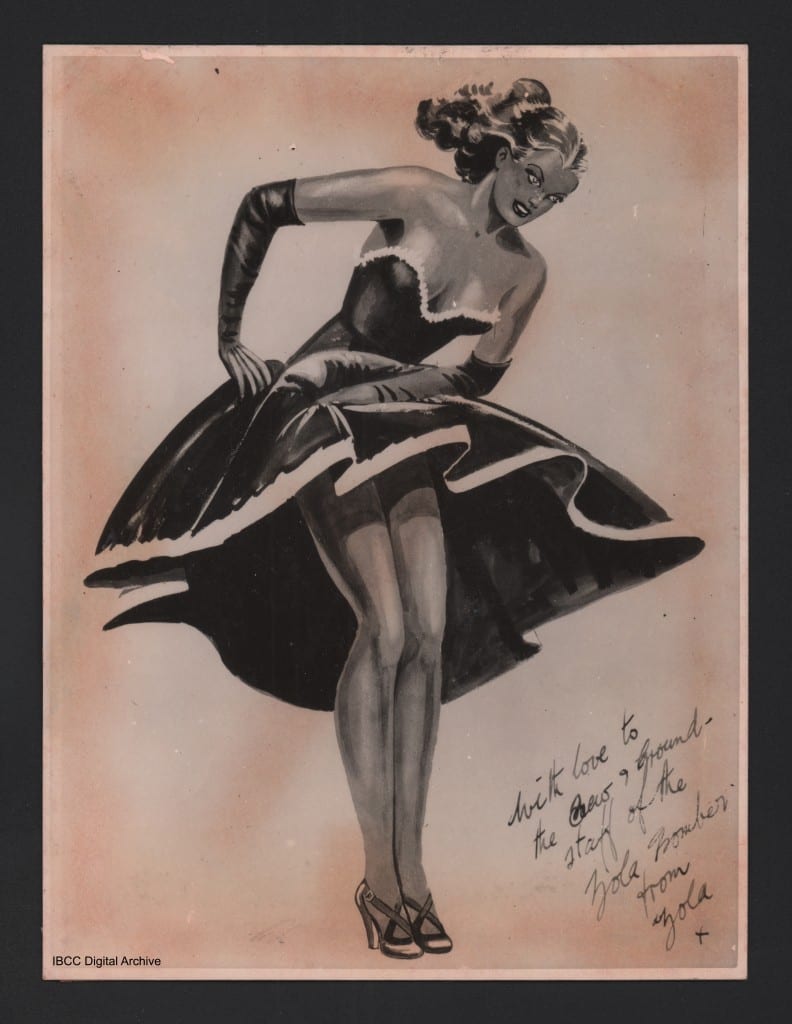Hello again to all who are reading this. As we approach the end of the build we’ve been thinking on all the suggestions that have been given to us over the last few weeks. Later this week or early next week we will be putting up a poll of a short-list selected by the IBCC Digital Archive team from all the suggestions which were submitted to us for the decoration we should use. At that point, the decision will be in your hands.
Last time we started on the nose and mid-upper turrets, finished off the rudders, the vertical stabilisers and added the skin panels to the nose section.
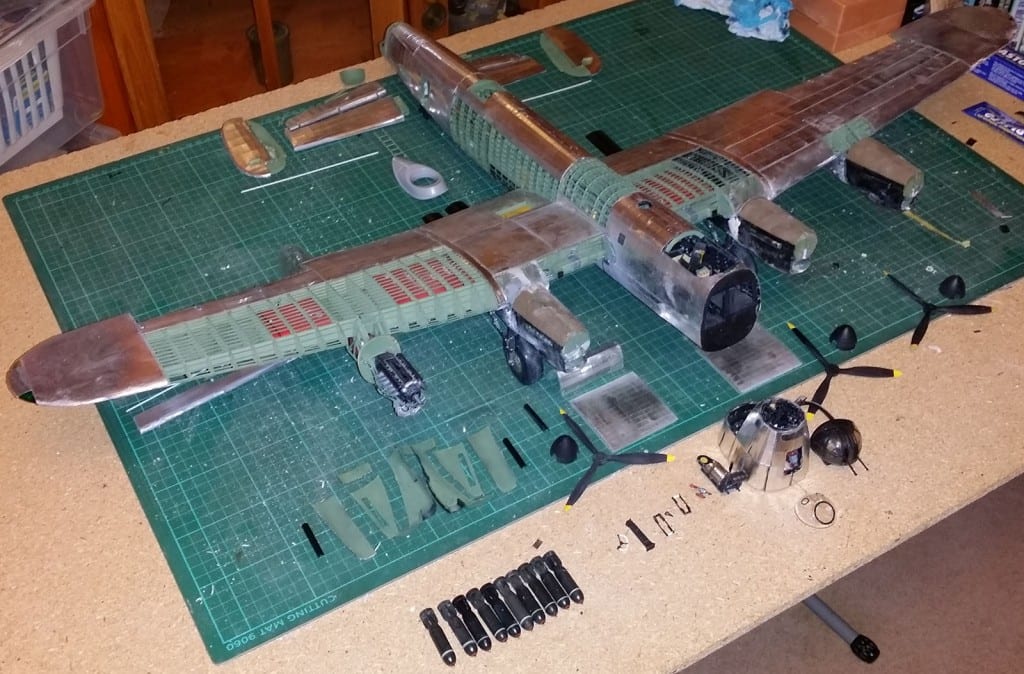
This time we worked on the mid-upper and rear turrets, the bomb-bay doors and started some work on the canopy. Here are the parts which came with the relevant issues.
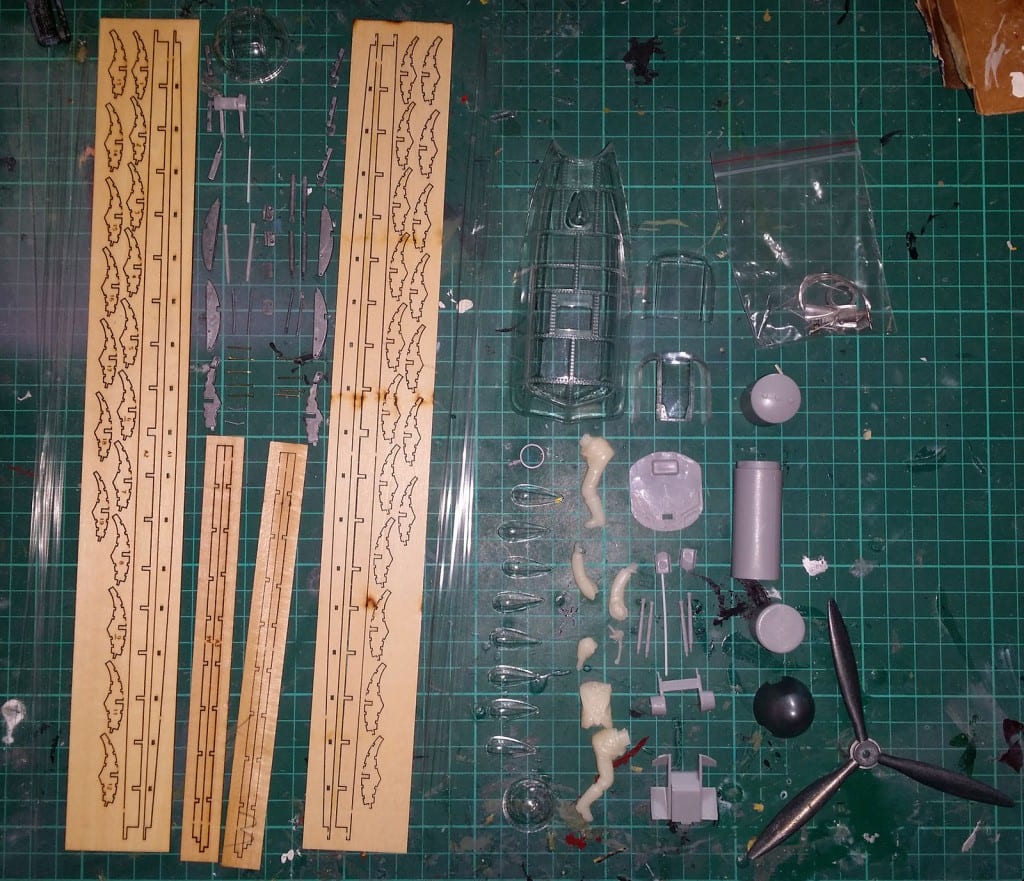
The first thing we did was to assemble the model of a pilot so that we could use it to properly position the foot pedals and control column in the cockpit.
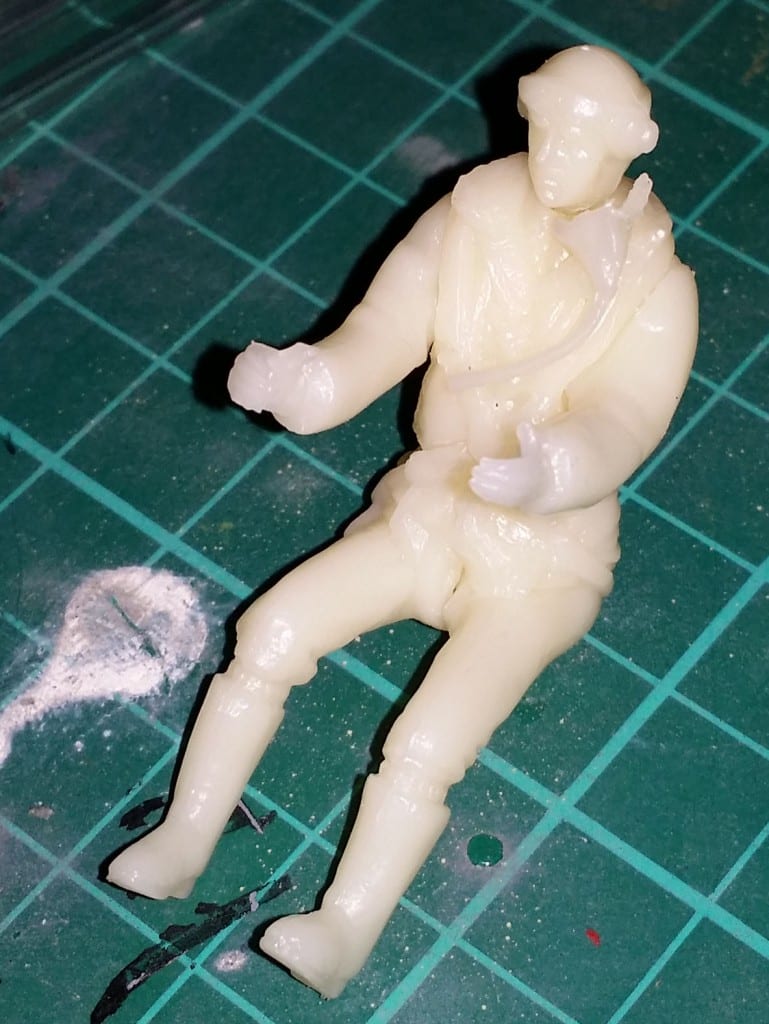
Next, we moved on to one of the major tasks of this diary entry, the construction of the two bomb-bay doors.
Starting with these parts.
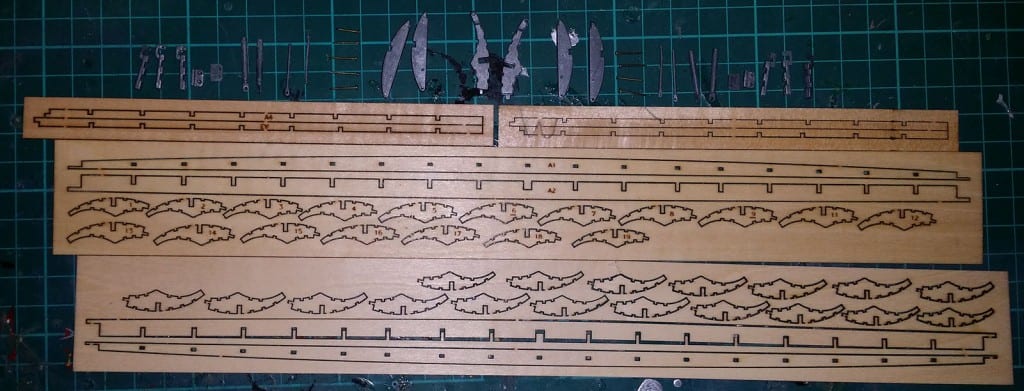
First, we extracted all of the parts from their frames, and assembled the hinges.
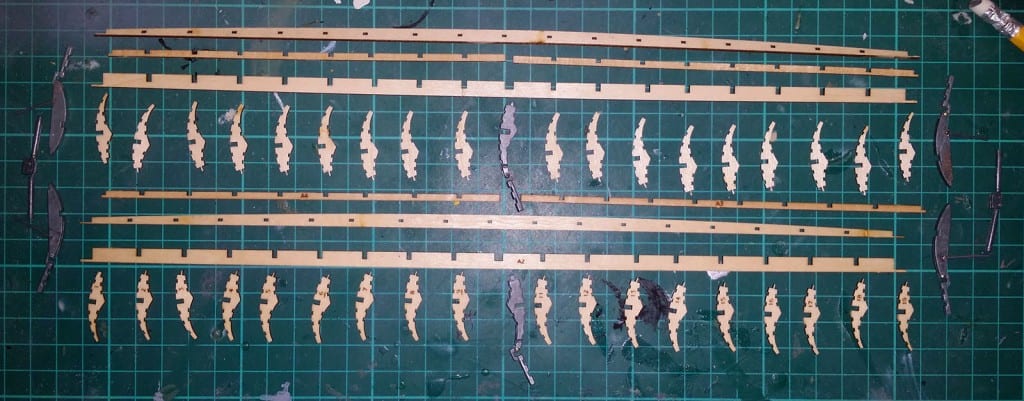
Then, we assembled the basic frame of the doors.

Before adding the stringers.

Having done this we then sanded the frame into shape, before beginning to prepare the 72 separate metal panels which were cut from a sheet of metal a few weeks ago (18 shown here).

Each of the panels had to be filed at the edges to ensure a smooth fit with their neighbours and had to be curved (by rolling the pieces over the handle of a knife) to fit the frame.
For the interior panels, even more work was needed.
The interior panels form two curves allowing large bombs (like the 4000lb HC bomb or “Cookie”) to fit inside the bomb-bay.
This meant that first, the line where the panel crossed the bar along the length of the doors had to be drawn onto the panels, followed by bending the panel at that point, and finally curving the two sides into shape.
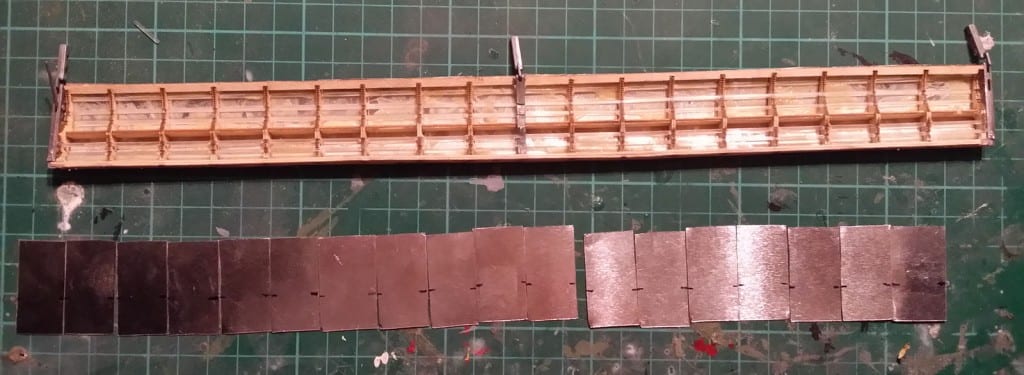
Then, after all the panels had been glued on, we had to add filler to close any gaps, before sanding the doors down.

That done, the bomb-bay doors were set aside to be painted.
We next moved on to adding masking tape to the clear plastic pieces which make up the turrets and the astrodome.
First, we added masking tape, and then (with a very sharp knife) slowly cut away all the excess to leave these.

These were then set aside to be painted. Unfortunately, whilst removing the masking tape from the rear turret following painting, I must have had either some superglue or some paint thinner on my hand. The result was that the plastic turned foggy almost immediately, and we are currently working on how to salvage the rear turret.
That having happened, we proceeded more carefully with assembling the mid-upper turret and the internal parts of the rear turret.
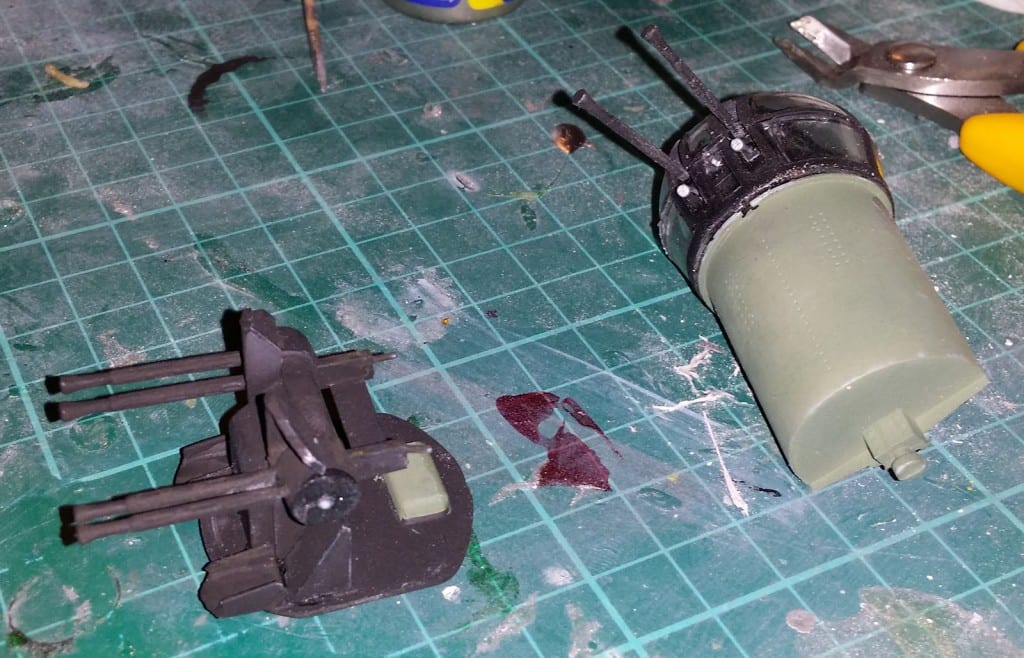
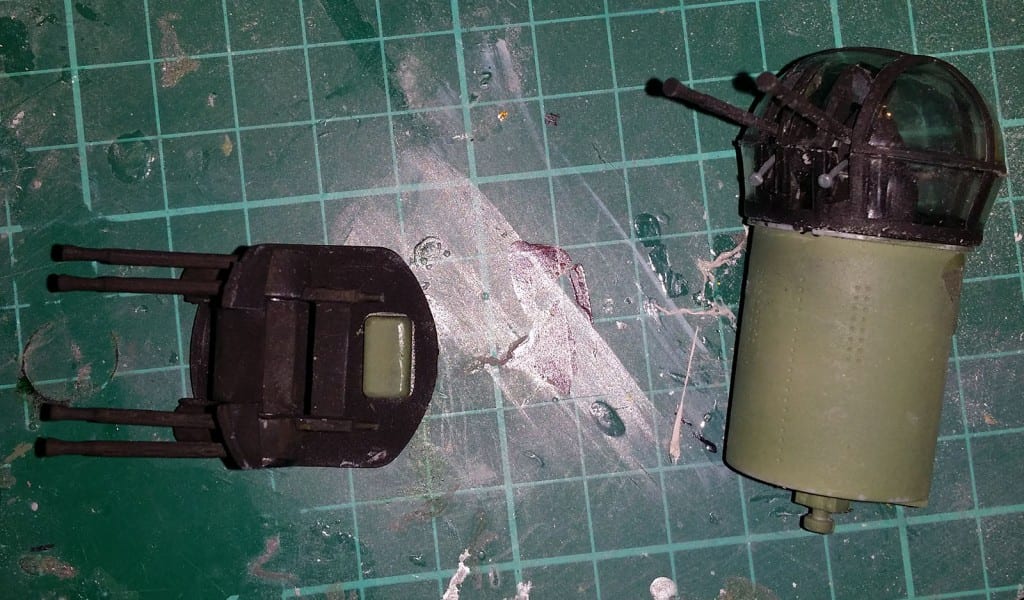
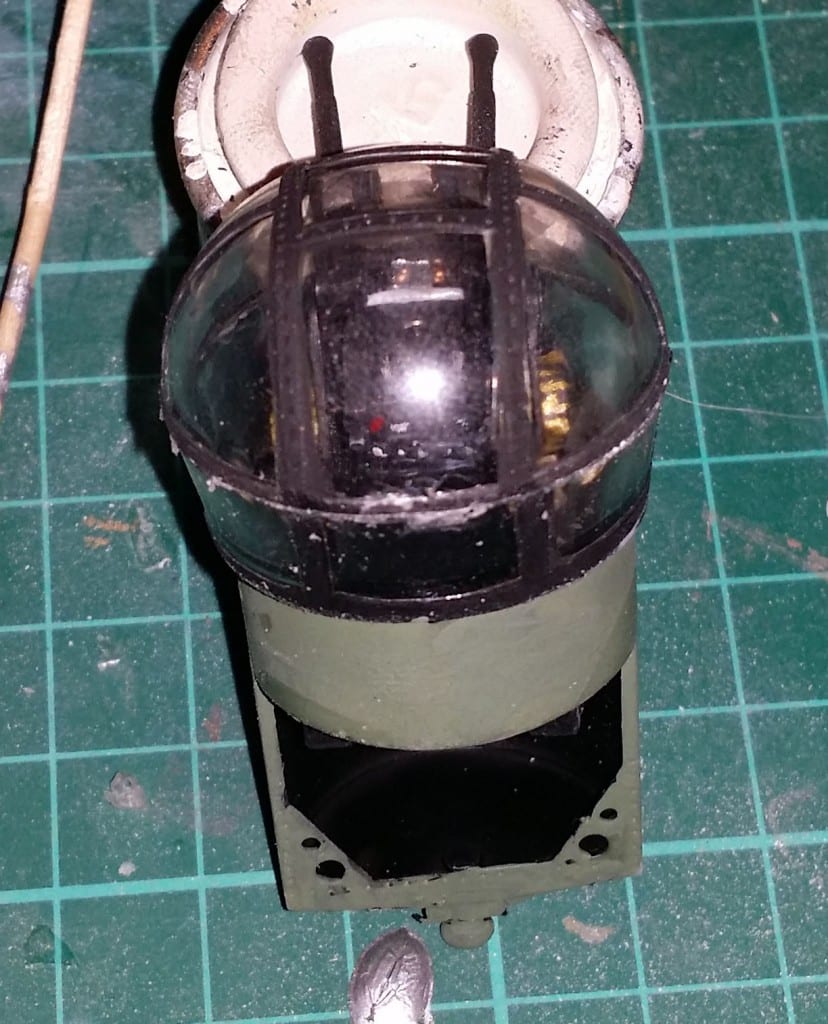
Below are all the parts worked on this week, including the last propeller and its spinner.

Whilst these were being worked on my father was assisting by attaching most of the remaining panels and using filler to close any gaps. He was also attempting to solve the problem we encountered with the canopy (mentioned in last week’s interlude).
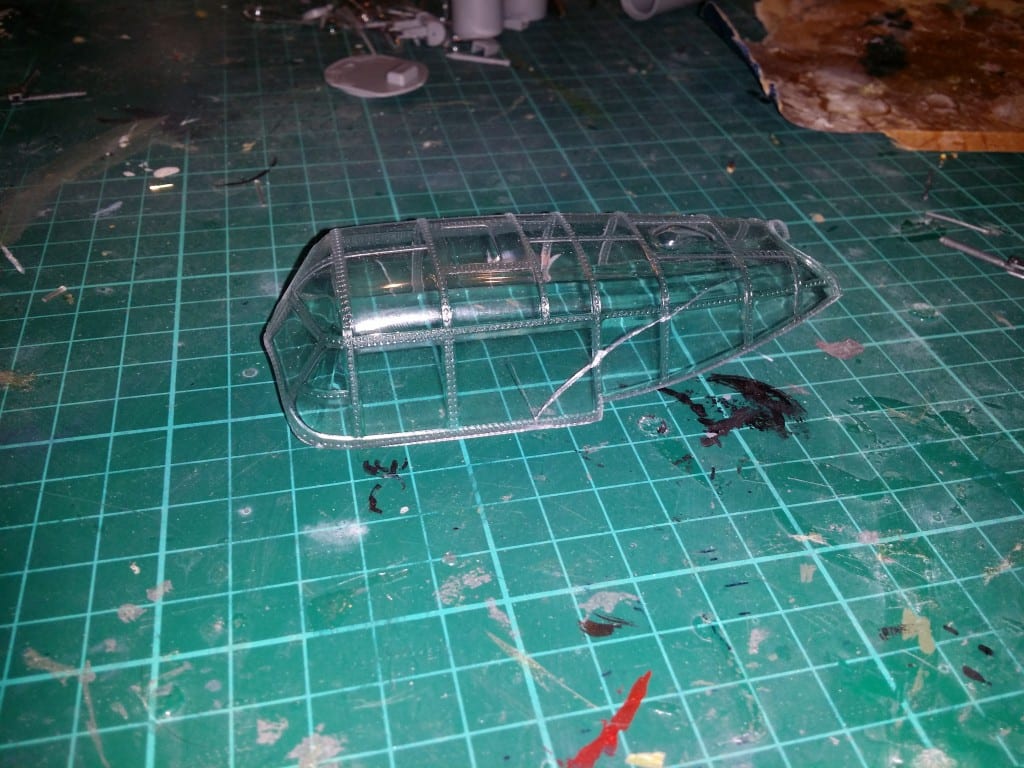
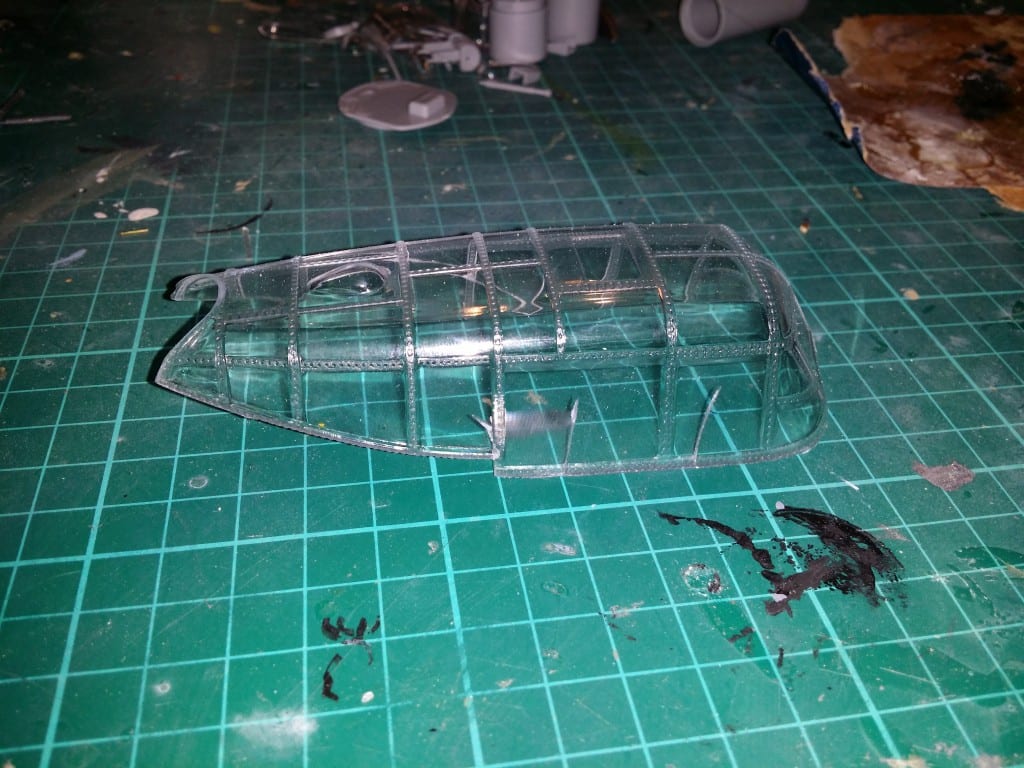
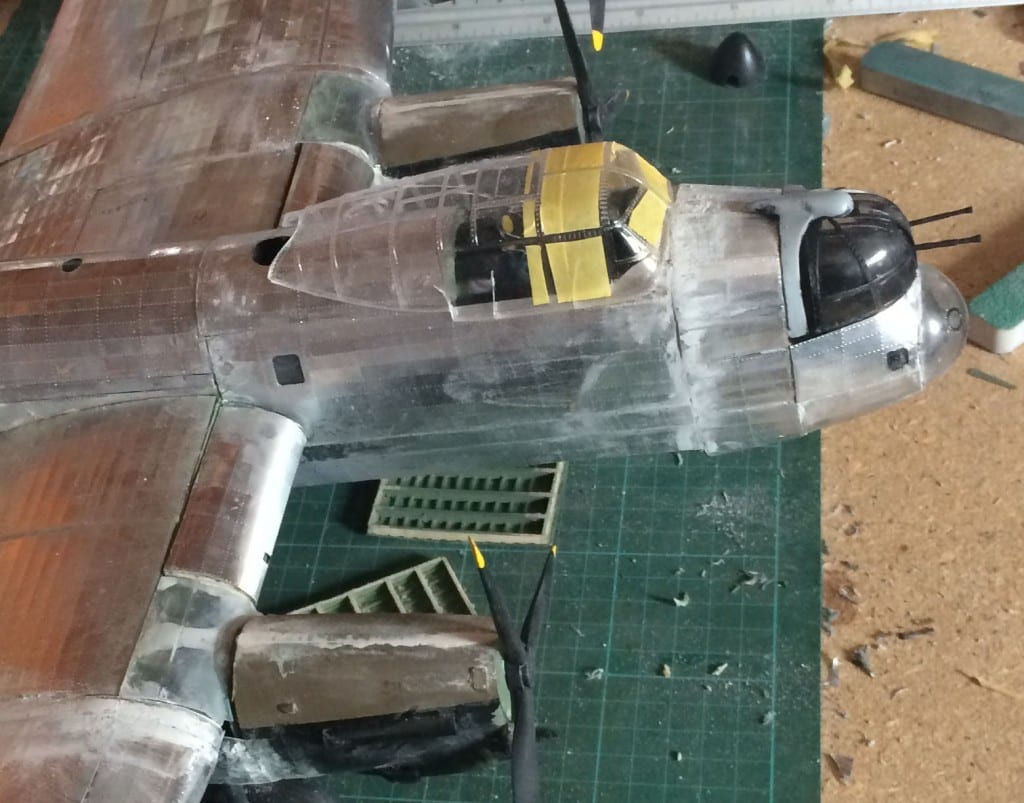
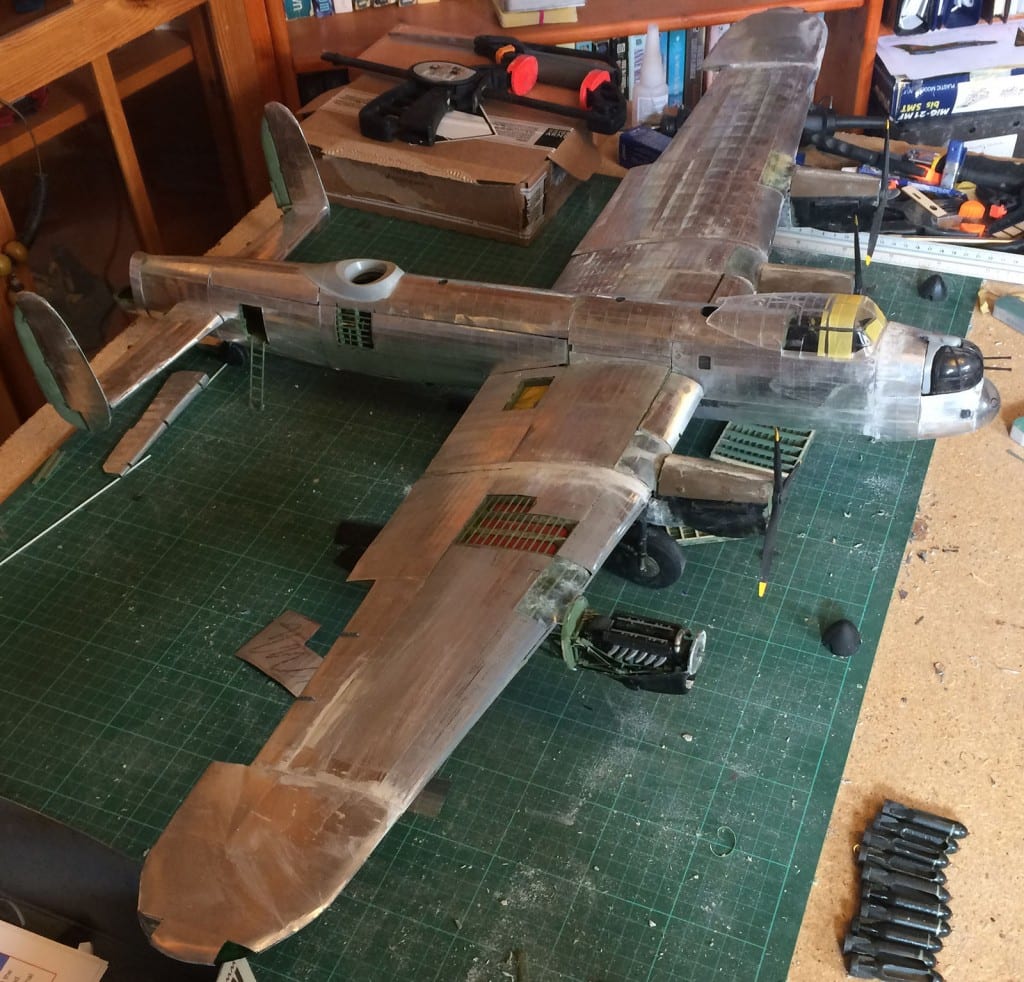
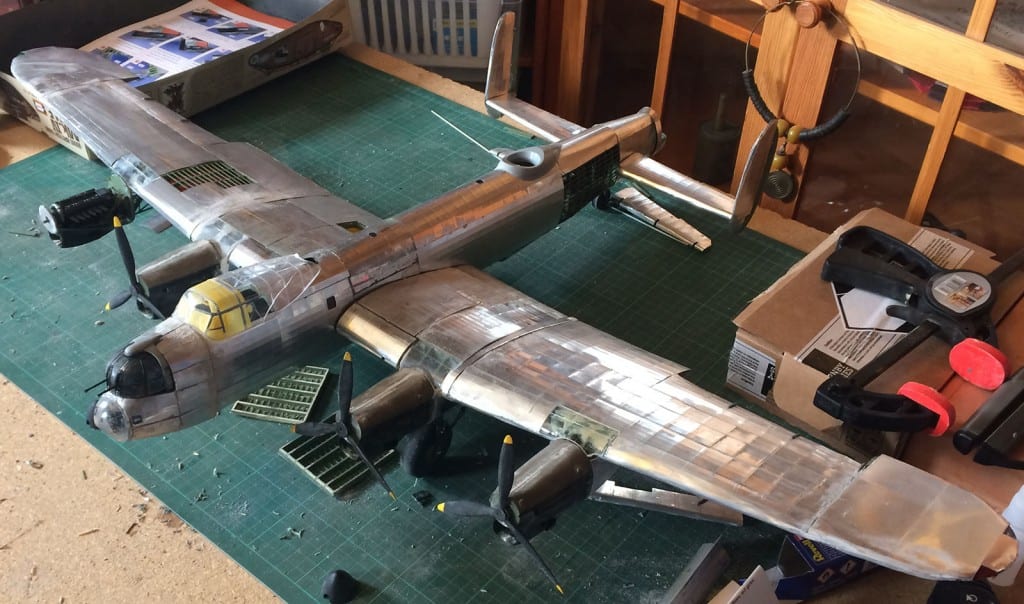
To that end, we decided that all the flat panels with cracks in should be removed and replaced with some plate styrene which we had available. First, the damaged panels were removed.
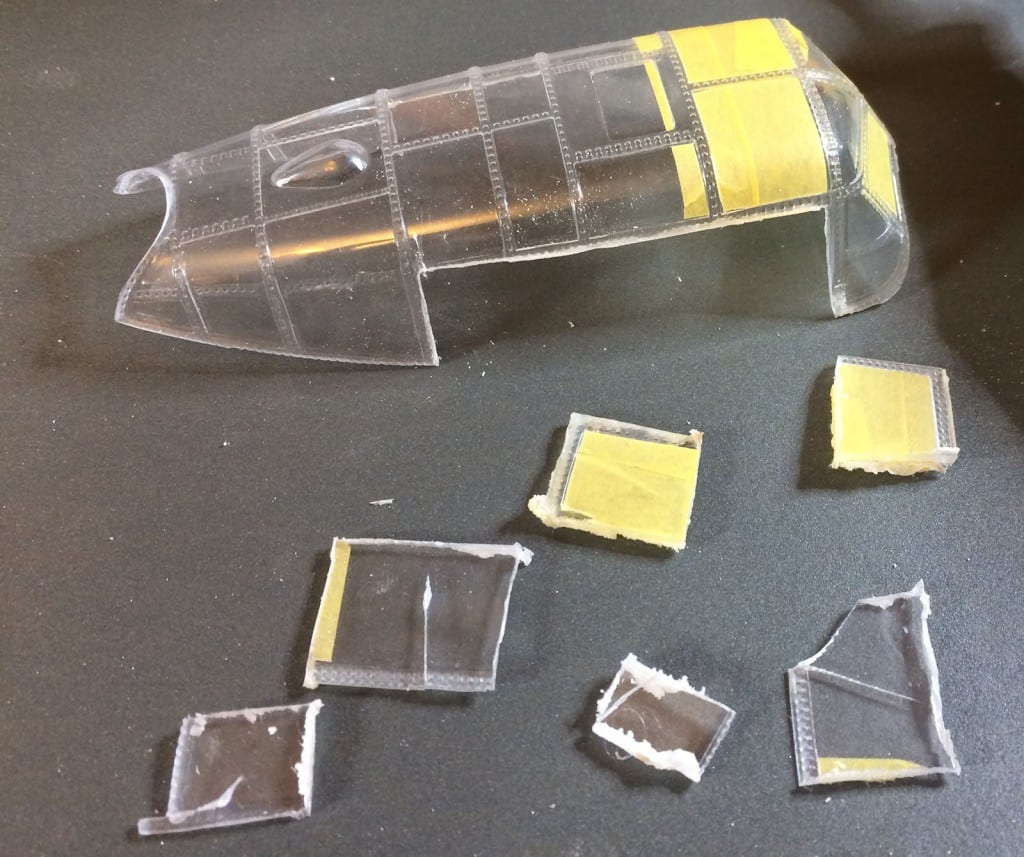
Then, a piece of card was used to obtain the shape and size of the panels.
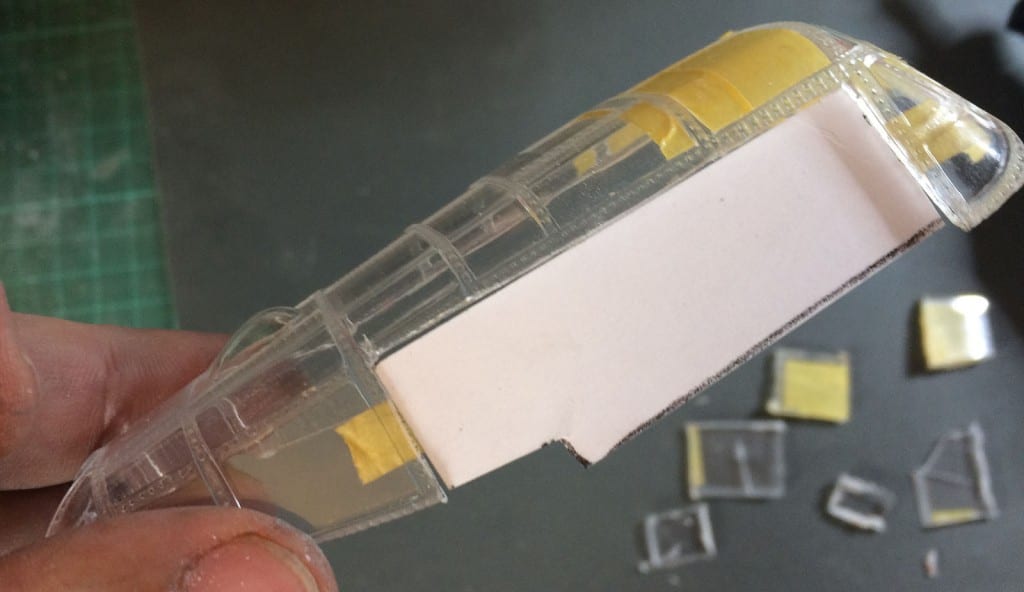
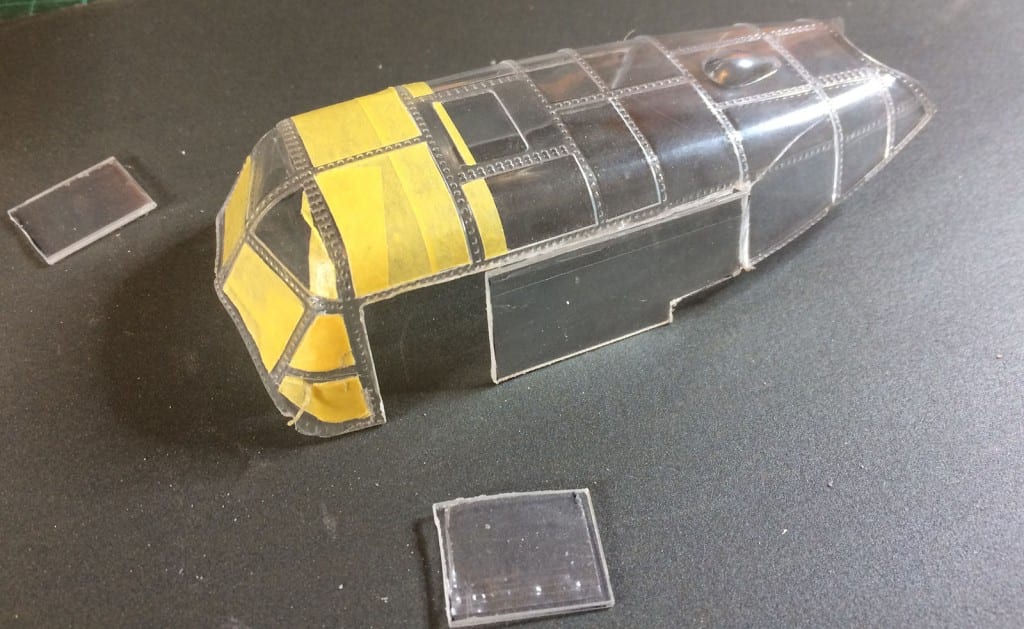
Finally, pieces of scrap metal were used to recreate the window frames. The missing section is where the cockpit windows will be slid back, as they would be on the ground (we also intend to add a lower rail in that area).
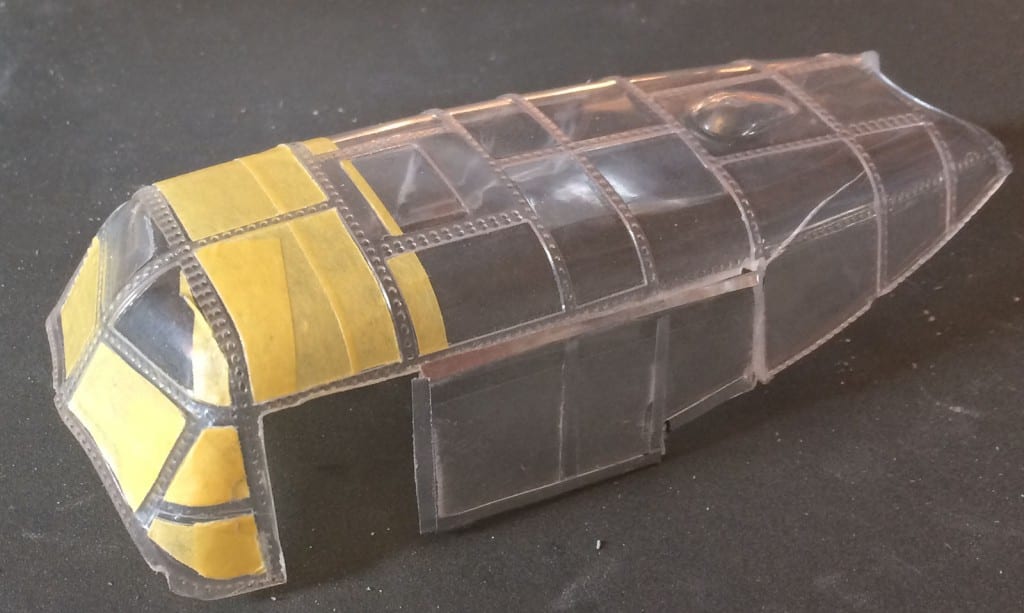
Bringing us to our conclusion for this build diary.
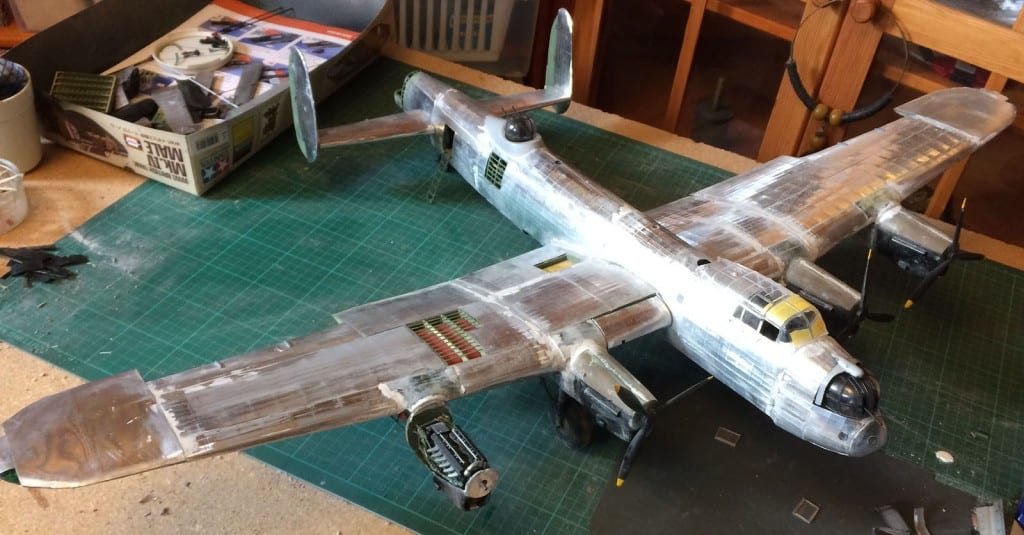
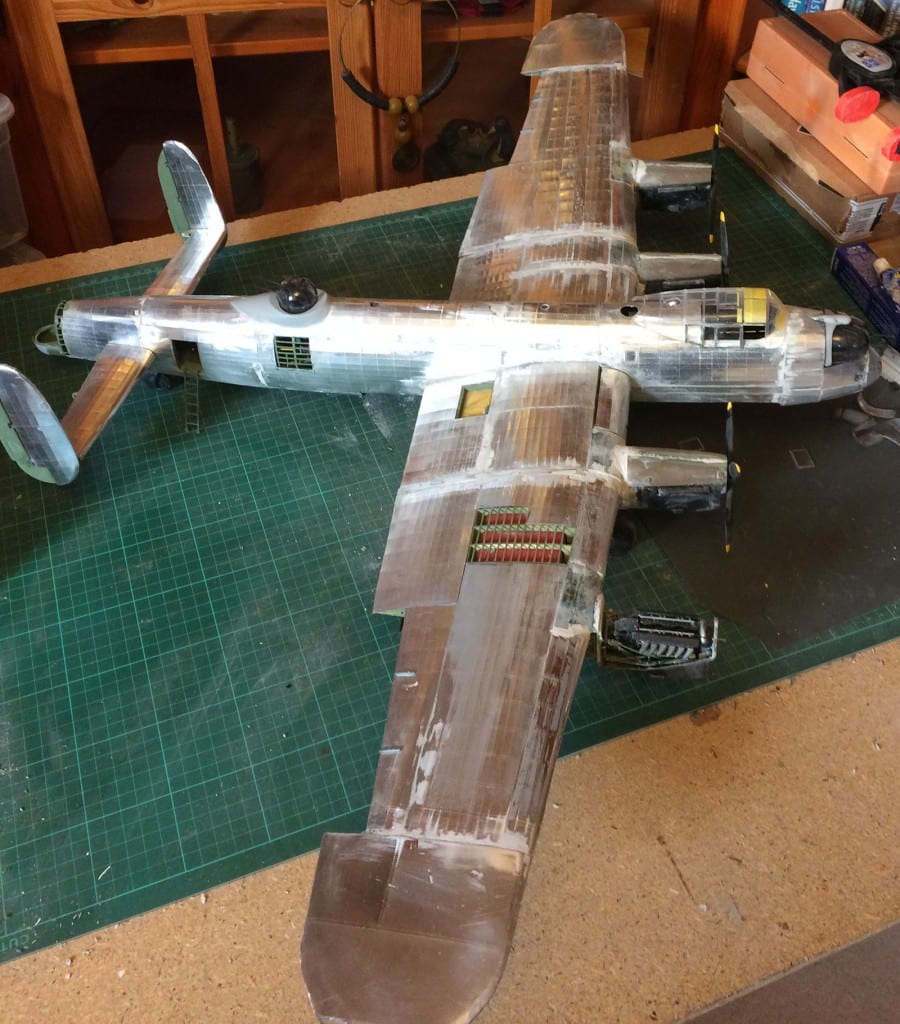

Our hope is that the next build diary will be the last focussing on the Lancaster itself, and that the diary will cover attaching the last few details and painting the model.
